The graph below from Crescat Capital shows that, in aggregate, the market-leading FAANG stocks saw a decline in sales last quarter on an inflation-adjusted basis. FAANG is an acronym for the following stocks: Facebook, Amazon, Apple, Netflix, and Google. The FAANG companies have seen tremendous growth over the last two decades. However, these companies are quickly maturing and turning into cyclical stocks. The companies still have divisions with solid revenue growth. However, the growing majority of their revenue sources are no longer high-growth.
As they morph into cyclical companies, their financial performance should more closely track economic growth. As such, the relatively high valuations on some of these stocks may revert to more normal valuations. The five FAANG stocks account for 22% of the S&P 500 and have a weighted average P/E of 31. The P/E on the S&P 500 is currently 18. If the P/E on all of the FAANG stocks fell to 18, the S&P 500 P/E would decline to 15.24.
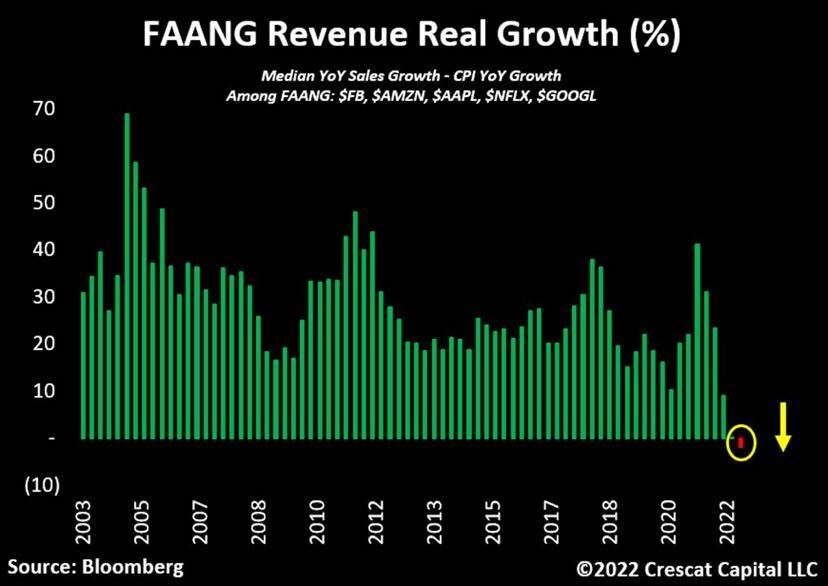

What To Watch Today
Economy
- 7:00 a.m. ET: MBA Mortgage Applications, week ended July 29 (-1.8% prior)
- 9:45 a.m. ET: S&P Global U.S. Services PMI, July final (47 expected, 47 prior)
- 9:45 a.m. ET: S&P Global U.S. Composite PMI, July final (47.5 prior)
- 10:00 a.m. ET: Factory Orders, June (1.2% expected, 1.7% prior)
- 10:00 a.m. ET: Factory Orders Excluding Transportation, June (1.7% prior)
- 10:00 a.m. ET: Durable Goods Orders, June final (1.9% expected, 1.9% prior)
- 10:00 a.m. ET: Durables Excluding Transportation, June final (0.3% prior)
- 10:00 a.m. ET: Nondefense Capital Goods Orders Excluding Aircrafts, June final (0.5% prior)
- 10:00 a.m. ET: Nondefense Capital Goods Shipments Excluding Aircrafts, June final (0.7% prior)
- 10:00 a.m. ET: ISM Services Index (53.5 expected, 55.3 prior)
Earnings
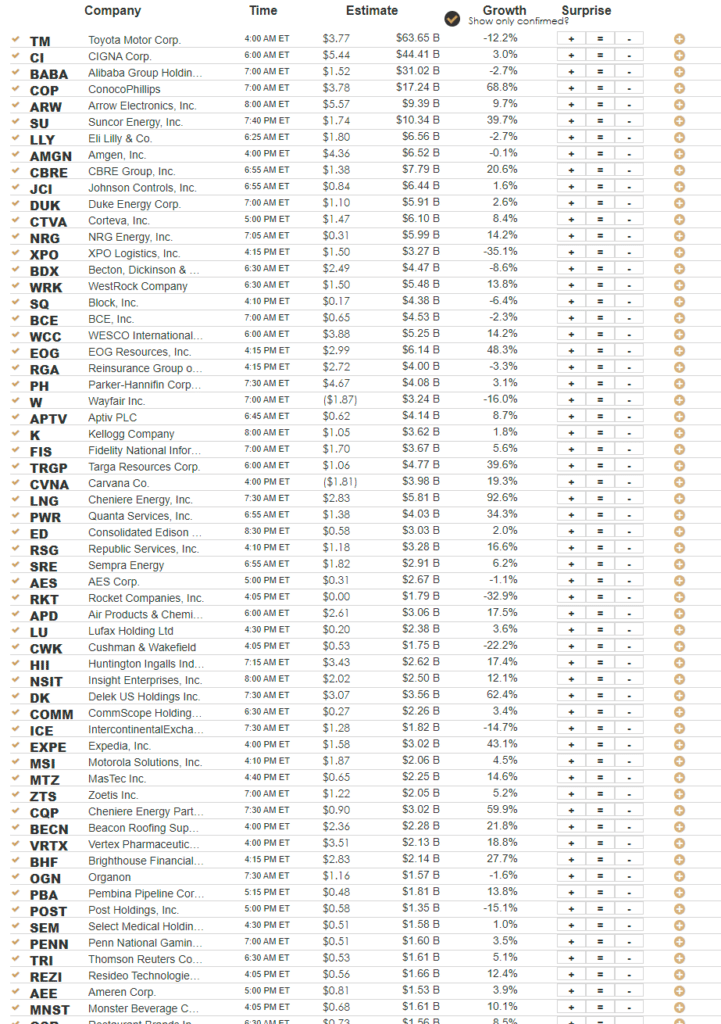
Market Trading Update – Stocks Soar Into Very Overbought Territory On Economic Data
The market had an interesting response to stronger than expected Non-Manufacturing Data which allows the Fed room to hike rates more aggressively. Nonetheless, stocks put on a stellar day advancing sharply on the news as bulls piled into stocks assuming the near-term bottom is in. However, as shown stocks are now pushing more extreme overbought conditions which will likely limit upside near term. We continue to suggest holding positions but taking profits and rebalancing risks along the way.
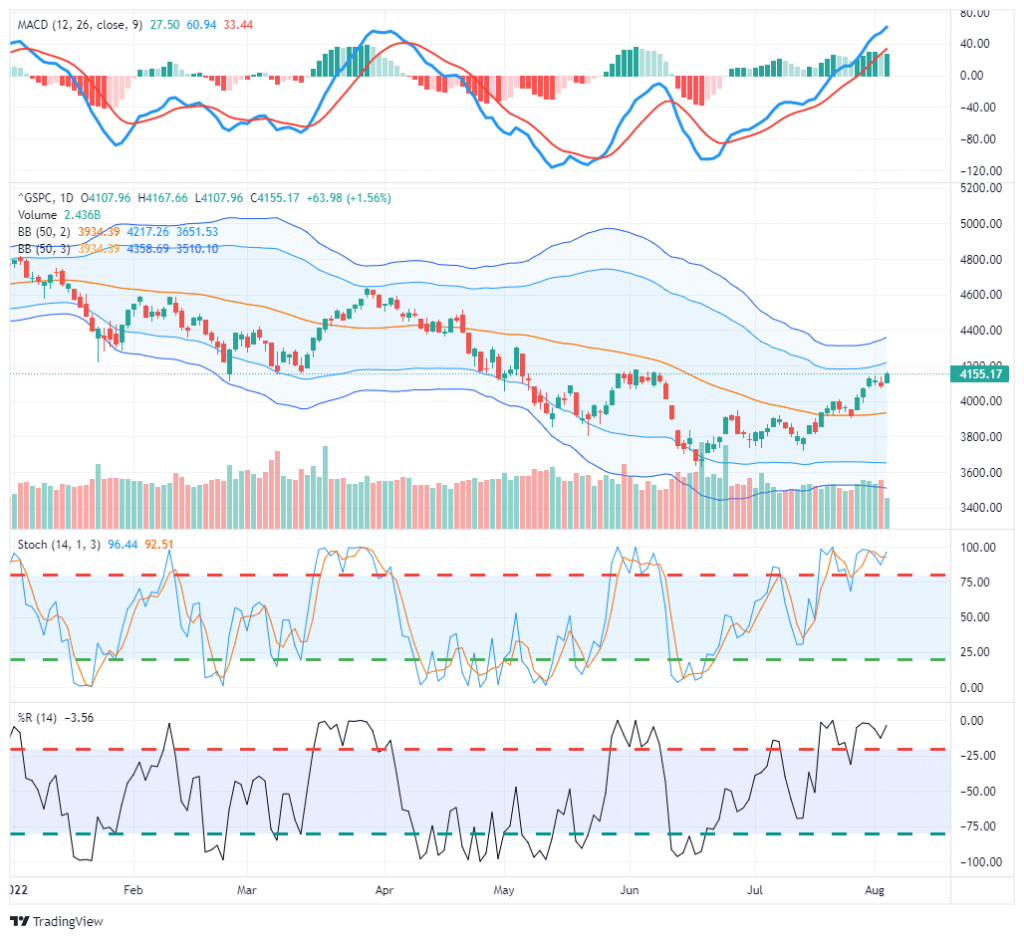
Labor Market is Cooling
As we await Friday’s unemployment data and today’s jobless claims, there are signs in the manufacturing surveys and Tuesday’s JOLTS that labor markets are cooling. JOLTS job openings fell by 605k, the third largest decline on record to 10.7 million. Expectations were for 11 million openings. As shown below, the only time the number of openings fell more in a month was during the first few months of the pandemic. As the tightness in the labor market eases, wage pressures should also subside and help ease concerns the Fed has about a price-wage spiral. A price-wage spiral could cause inflation to be persistent at higher levels than they would prefer. Keep in mind, while the decline in job openings is huge, the number of openings is still about 50% more than in the pre-pandemic years.
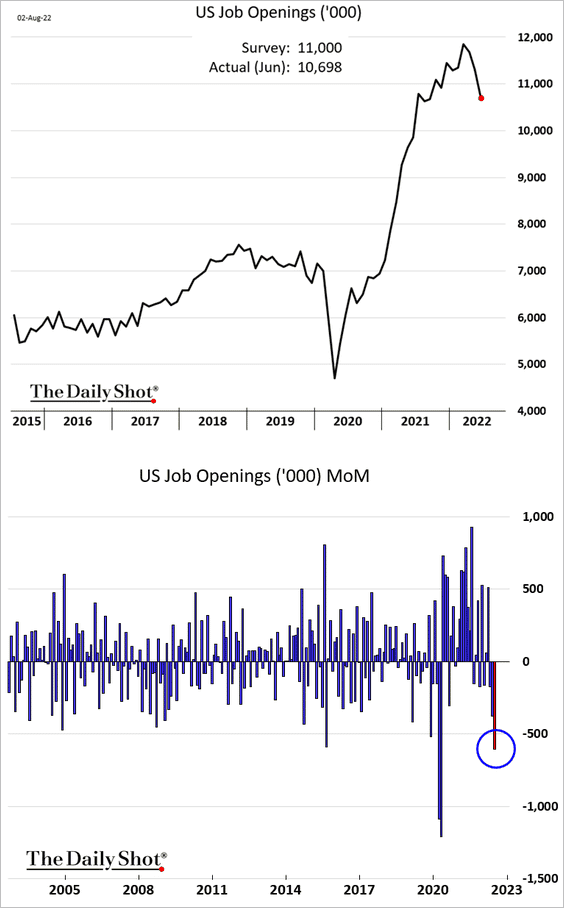
Credit Card Use is Off the Charts
Per Axios-
Credit card balances are ballooning at the quickest pace in decades, reflecting higher prices and more open accounts than ever before.
Inflation is handily outpacing wages, and consumers are drawing down savings and using credit to help make ends meet. The graph below shows that the number of credit card accounts grew by about 10% in just the last two years. CNBC reports that credit card balances rose 13% in just the second quarter of 2022. According to the New York Fed, that was the largest increase in more than 20 years.
Personal savings, shown in the second chart, are down to levels last seen over ten years ago. With inflation running at 9% and arguably higher for lower and middle-income classes, who spend a higher percentage of their income on food and energy, many people have no choice but to use savings and debt to maintain their lifestyles. The problem is that both credit and savings are temporary measures with limits. If inflation doesn’t cool quickly, many families will be in quite a bind.
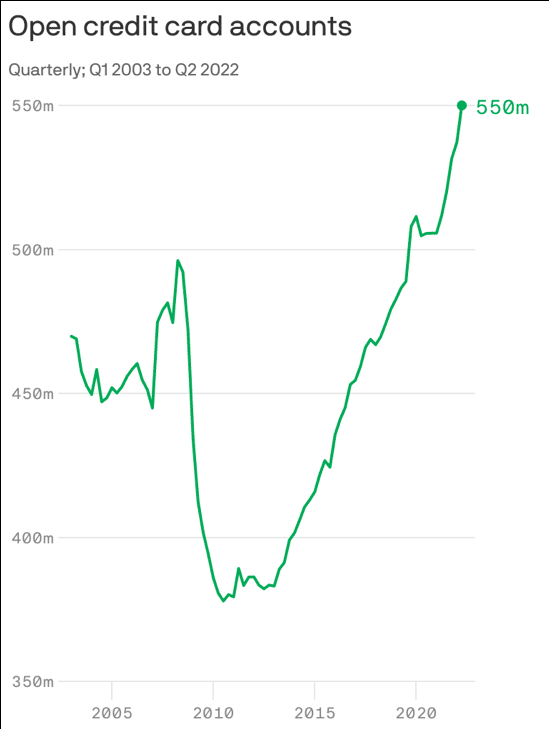
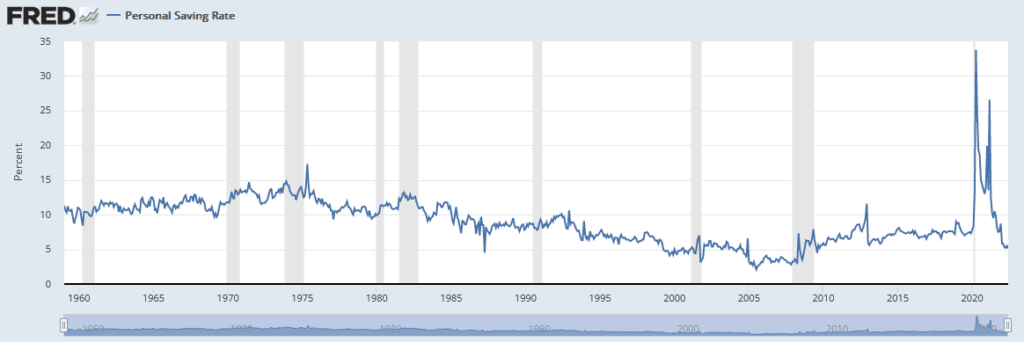
More Good Inflation News
Yesterday we discussed the plummeting prices paid index within the ISM Manufacturing survey. Today, the data is affirmed by the ISM’s Services Industries survey. As shown below, prices fell sharply to one-year lows. The ISM and regional manufacturing surveys tend to be among the most real-time data provided to the public. As such, the surveys offer some hope that we may see CPI and PCE prices start to follow suit. However, the surveys do not account for housing/rent prices. Housing accounts for about a third of the CPI and can easily offset price declines in other areas.
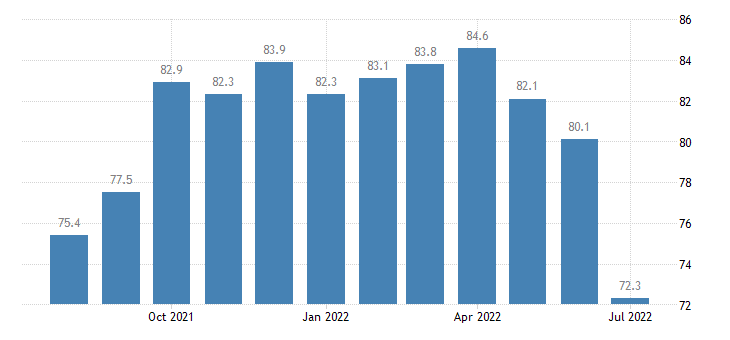
Please subscribe to the daily commentary to receive these updates every morning before the opening bell.
If you found this blog useful, please send it to someone else, share it on social media, or contact us to set up a meeting.




